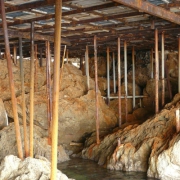LNG supply for Asia – fighting the Hydra
New Asian LNG buyers (outside the JKT and China) have a problem. They are perceived to be in the “I will pay any price for LNG” club by sellers. Many of them face vastly different situations from each other in their home markets. Not an enviable position but one that can be dealt with.
The International Energy Administration (IEA) has painted a rosy picture in its 2012 World Energy Outlook. Unconventional oil and gas have again delayed peak oil to Lala-land and will save the planet from all its energy ills. Or just about.
Spotlight on Asia and LNG. The region is the Holy Grail for LNG sellers. That means that anyone who produces (or wants to produce) LNG aims at the phantasm-astic premium prices the region seems to promise.
Reality check: Asian buyers enjoy buying super expensive LNG about as much as anyone enjoys a good old colonoscopy.
For a starter, there are two kinds of Asian LNG buyers.
Buyers from the JKT countries are utility-like companies. They usually enjoy stable monopolistic markets (customers) which give them a lot of different tools to deal with inflexibilities in the supply chain. Besides, they hold significant excess regasification capacity to play the market. China rapidly becomes like that.
Other Asian buyers face very different situations. They usually don’t have luxuries like deep utility-type markets or overcapacities to insulate against the wildly fluctuating market. AND, they usually have no or little long-term supply in place.
So what are their options? With a slew of new projects under construction in Australia and around and new projects coming up on the North American West coast and Eastern Africa, things should be great for them. Reality is different.
Let’s slice the pie up and see what pieces are palatable. You can classify potential supply sources by their readiness to deliver LNG.
- Operational projects – those projects are all fully committed in some form. Some of them produce so-called portfolio LNG which means that some portfolio buyer takes the LNG under a long-term arrangement and attempts to make money by reselling with a return. Those portfolio sellers are as real as a heart attack but they are also very, very expensive. This is an option of last resort only as often it’s better to leave the receiving terminal empty rather than give in to the demands of the portfolio seller.
- Projects Post FID – those are certain to come on stream but are not operational yet. They are primarily located in Australia but there are others. Not all of those projects are fully committed so in principle there are available volumes. The snag is that virtually all of those projects have logged in super high CAPEX (read the Black Mamba one and two) and some of them are vulnerable now. They cannot afford to give in to price demands as new Asian buyers would likely have them. My experience is that talking to them is a waste of time.
- Projects pre-FID – there are myriads of them but their problem is that they are up in the air and let’s be frank; the vast majority of them remain paper tigers. Besides, even if you are sure that your pick is a winner, you will face a combination of unrealistic expectations on the project developer and on the feed-gas owner side plus a load of Local regulations making it hard for new LNG projects to operate profitably. And most importantly of all, if your project has not taken FID by now there is no way for any LNG to come out of it before 2017 at the very earliest. Can you wait that long?
- There is a new fourth group – the Atlantic sellers having misread market developments – this group might not see itself as a group now but it becomes clear that the “everything to Japan” strategy some of them have adopted has not worked too well. They will find out over the next 18 months or so and then there will be some operational LNG up for grabs. But this will not be an easy position as it involves high-risk business development and lobbying with a very gentle touch. It’s a risky venue but at least, it’s real.
Deciding on what to do and which potential supply source you apply yourself to is like fighting a hydra. Some of the heads you chop off regrow with time. That’s not fair but hey, I never said that fairness is part of the game.
Your biggest enemy is time. Feeling the breath of the monster down your neck gives you a sense of urgency that sometimes drives you to do the right things. Making decisions in LNG can be scary so some adrenalin might give you the kick you need. If the problem is not imminent you might feel a false sense of security. In LNG, one year is nothing. So if your supply problem is not more than 3 years away, get the hell out of your chair and do something. This monster does not even know the word mercy and will eat you alive.
It also pays for Asian buyers to try out new things. Next week I will post on the “Give to get” strategy which, I believe, is the best possible way to take on the problem so stay tuned. This is no armchair strategy. It’s good old business development with getting your feet on the ground and beating the drums of your future partner.
This has to go beyond sterile negotiations. An interested buyer needs to inspire the values of partnership and cooperation in the host country. I have said in another post that Sub-Saharan Africa is going to be the likeliest place for such a deal. Read my post on Africa for details. At least two players need to rethink their strategies.
Those who engage now will have an advantage when this breaks open in more than a year. Then, you don’t want to find yourself being put in a line with 40 other contenders. You want to have a special relationship already established. That’s an investment and as it is with every investment, the buyer will have to decide on whether the risk/reward balance is worth it.
In LNG, you can do a lot worse than that.


















Leave a Reply
Want to join the discussion?Feel free to contribute!